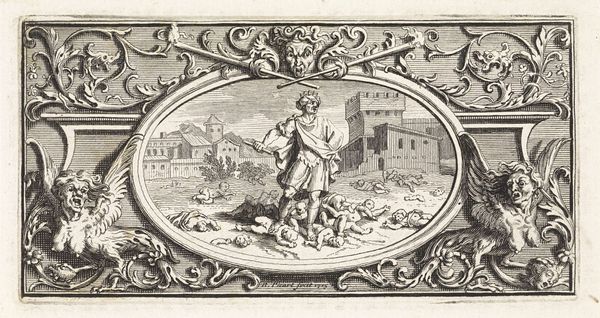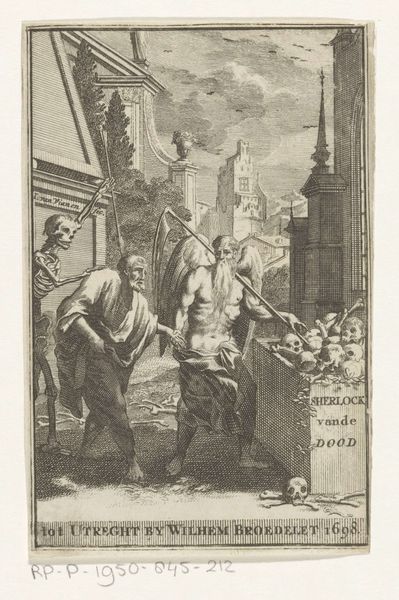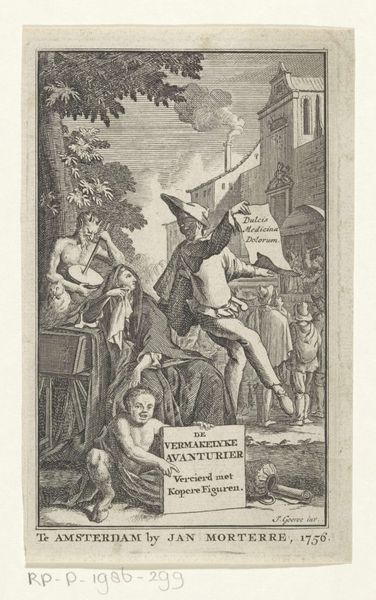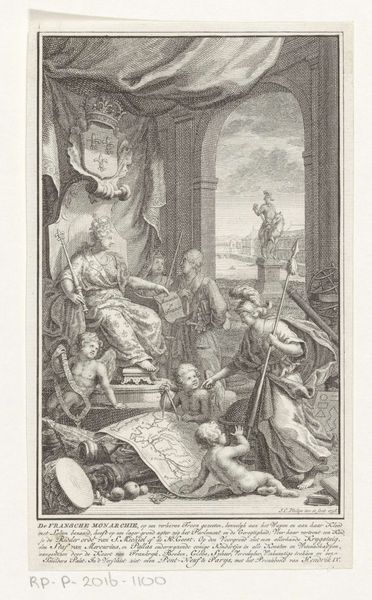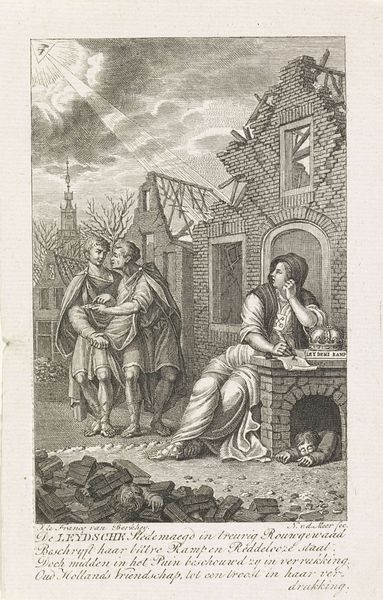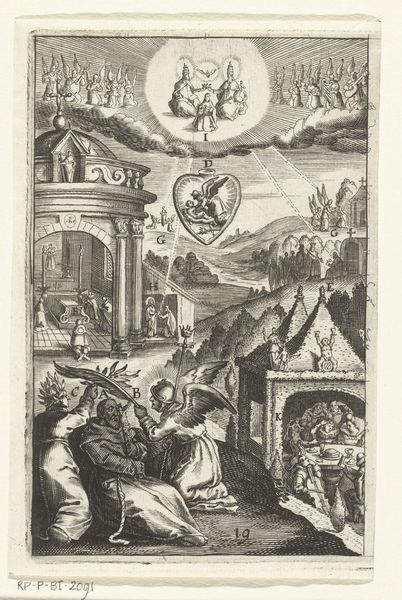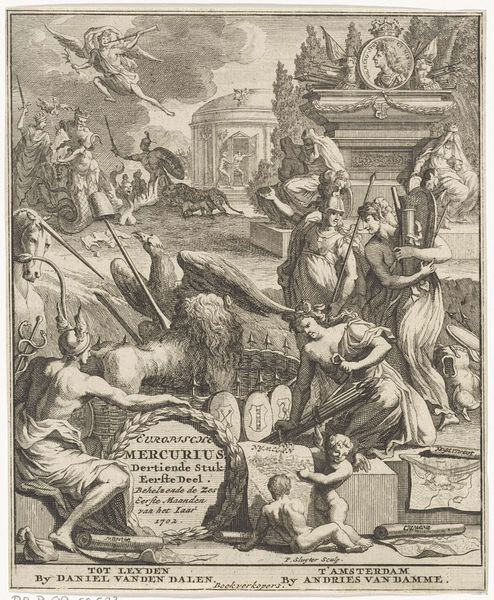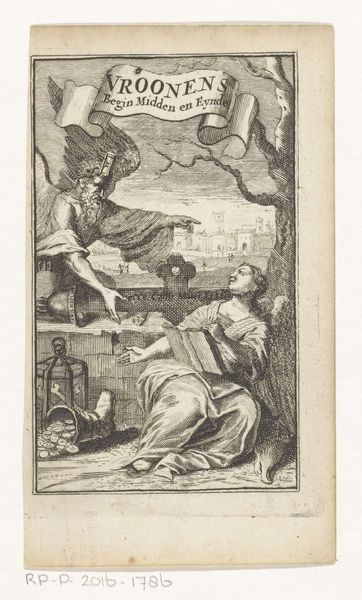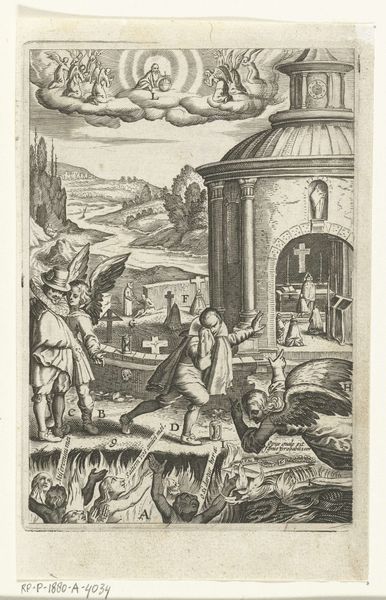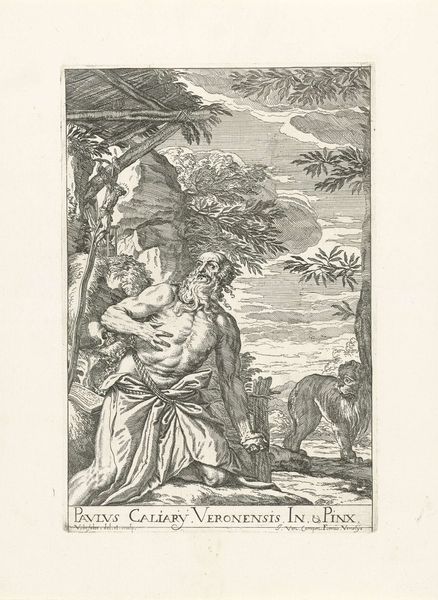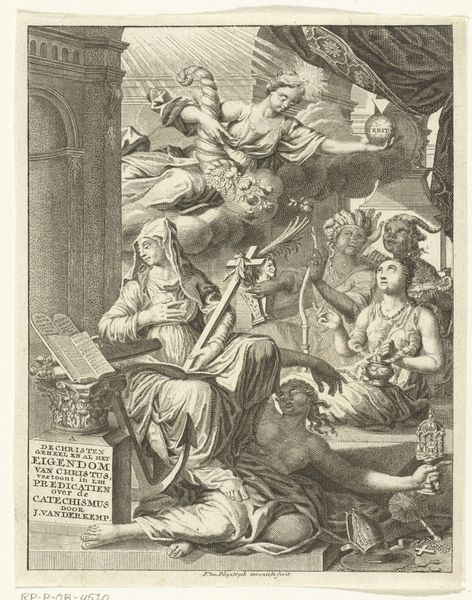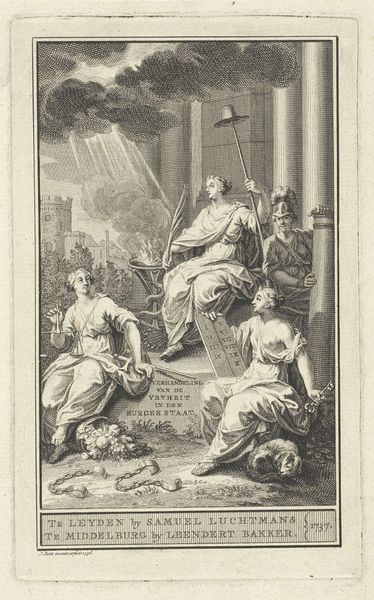
Dimensions: height 354 mm, width 255 mm, height 250 mm, width 178 mm
Copyright: Rijks Museum: Open Domain
Editor: This is "Amphion bouwt de muren van Thebe," or "Amphion Building the Walls of Thebes," an engraving by Bernard Picart from 1733. It looks incredibly detailed! I’m struck by the contrast between the figure playing the violin and the sheer, blocky architecture springing up around him. What's your take on it? Curator: Ah, Picart! He was a master of imbuing mythological narratives with…shall we say, a bit of theatrical flair. See how Amphion, seemingly lost in his music, casually sits amidst the chaos? The rocks aren't just flying randomly; they're assembling themselves, dancing to his tune. It’s as if the sheer power of art can shape reality! It reminds me of Orpheus, but with more construction, less underworldly drama. Do you find the details in the border as compelling as the main scene? Editor: Absolutely! The floral arrangements juxtaposed with musical instruments are interesting, almost celebratory. But the Medusa head at the bottom adds a sinister note, a dark contrast to the harmonious construction. What do you think it symbolizes? Curator: That Medusa... perhaps a reminder that even amidst creative endeavors, chaos and destruction lurk. It is a nice counterpoint to the uplifting act of creation itself, and maybe a comment on the artist's struggles in the baroque period. Or, who knows, maybe Picart just liked a bit of edge. What feelings are stirred when you consider this piece overall? Editor: Initially it felt grand, but now with your insights, it's more complex. A celebration mixed with warning. Curator: Precisely! It's those layered meanings, those quiet tensions, that make it so much fun to revisit old images like this! I find Picart really stimulates one's thinking.
Comments
No comments
Be the first to comment and join the conversation on the ultimate creative platform.
